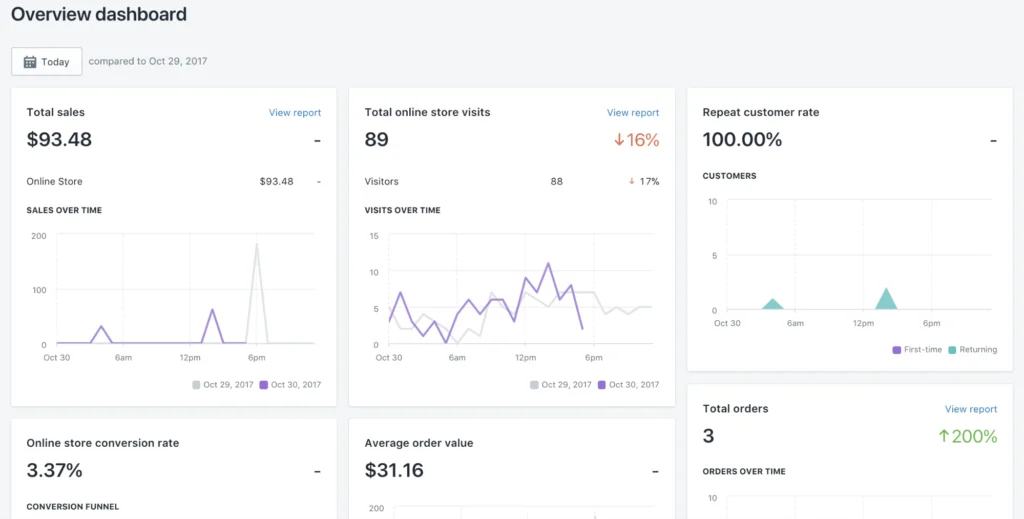Do you have a great idea for the perfect customized product you know others would love to buy? Thanks to e-commerce platforms like Shopify, you can use that creative spark to create and sell custom products online.
Whether it’s customized apparel, phone cases, or home goods, learn how to design your items, build a custom products shop, and make sales with this Box Builder Guide.
Create and Sell Custom Products Online
Let’s start with an appetizer before serving the main course. Here’s a detailed, step-by-step walkthrough for turning creative ideas into tangible products that thrive in the digital marketplace.
Step 1: Establish and Explore Your Idea

Every successful business venture starts with a clear vision. What are you passionate about? What unique value do you offer? While brainstorming ideas and identifying your niche, consider your interests, hobbies, or gaps in the market that align with your expertise.
Start with in-depth market research to gauge your idea’s merit. Explore competitors and identify trends within your chosen niche. Understanding your target audience and their preferences helps refine your concept and sets the stage for developing effective marketing strategies.
Step 2: Create a Name and Logo
Your Shopify store’s name and logo are more than identifiers; they represent your brand and influence customer perception. Here are some tips for creating a great store name:
- Choose a name that reflects your brand’s personality and resonates with your target audience.
- Do a domain availability check before finalizing your store name to ensure availability (and provide customers with a consistent online presence).
- Avoid overly complex names to make it easy for customers to find you. Also, when choosing a name, consider scalability and how well it represents your brand as it grows.
Craft a unique and memorable logo that communicates your brand identity visually with these tips:
- Consider hiring a professional designer or using design tools to create a polished, versatile logo to help you successfully sell custom products online.
- Ensure the design looks appealing in different sizes and formats (after all, it’ll appear on various platforms).
- Test your logo’s versatility by evaluating its impact in color and black-and-white formats, ensuring a consistent and recognizable presence across all marketing channels.
A well-designed logo and a well-chosen store name go hand-in-hand to build brand recognition. They also foster a sense of trust and reliability among your target audience.
Step 3: Take Care of Business Essentials

Choosing the best business structure is paramount because it affects everything from taxation and liability to long-term business scalability. Options include:
- Sole proprietorship: The simplest business structure, where the owner and business are treated as one entity
- LLC: Combines the simplicity of a sole proprietorship with limited liability for its owners
- Corporation: A separate legal entity from the owners that offers the highest level of personal liability protection, as shareholders are (generally) not personally responsible for company debts
Each business structure has unique tax and liability advantages and implications. Consult with a legal professional in your state to ensure compliance with local regulations and to make well-informed business decisions.
Understanding tax obligations is also crucial for e-commerce business owners. Research the most recent tax implications of selling products online, including sales and income tax. Shopify provides resources and apps to streamline tax management and help your online business stay organized and compliant.
Step 4: Decide Which Personalized Products To Sell
Your Shopify store’s success depends on offering irresistible products. Consider popular personalized items such as custom apparel, engraved jewelry, or home decor. Leverage Shopify apps that let customers add their unique personality to their purchases by customizing your wares.
You can add to your store’s credibility by showcasing examples of your specialized items. High-quality images and detailed product descriptions establish trust with potential customers and help them visualize using or wearing your store’s one-of-a-kind offerings. Plus, by building a visually appealing and user-friendly website, it’s easy for shoppers to navigate your store and find what they’re looking for.
Step 5: Launch Your Shopify Store
With your store concept, branding, and products selected, you’re ready to set up your online store. Create a Shopify account and select a plan. The online commerce platform’s intuitive interface makes it easy to customize your store, add products, and set up payment options.
Boost online visibility by optimizing your site for search engines. Use relevant keywords in product descriptions and meta tags to improve your chances of appearing in search results. By updating your content regularly and starting a blog, you can engage target buyers and improve credibility.
Step 6: Learn Effective Marketing Strategies
Establish a strong social media presence to connect with your audience and promote your custom products. You can leverage social media platforms like Instagram, Facebook, and Pinterest to showcase your store with eye-catching content. Engage with followers, respond to comments, and run targeted ads to reach a wider audience.
Want to nurture customer relationships? Create a mailing list. You can enlist Shopify’s built-in email marketing tools or third-party apps to set up personalized email campaigns. Use the mailing list to update your audience on new products, promotions, and company news to maintain their interest and loyalty.
Step 7: Continuously Improve Your Shopify Store
Analyze your store’s performance regularly with Shopify’s analytics tools.

By closely monitoring sales, website traffic patterns, and customer behavior, you can pinpoint specific areas that may need some optimizing TLC to improve user experience and profitability. Stay ahead of the e-commerce curve by keeping current on industry trends so that you can adapt your strategies proactively and maintain a competitive edge in an industry that never sleeps.
Learn How To Create and Sell Custom Products Online With Professional Help From Box Builder
Learning how to create and sell custom products online is the perfect way to explore your creativity and harness your entrepreneurial spirit, but it requires careful planning and execution. If you want to offer customers quality custom bundles and gift boxes, Box Builder is here to help. Contact us today to see how to increase sales without increasing ad spend.


